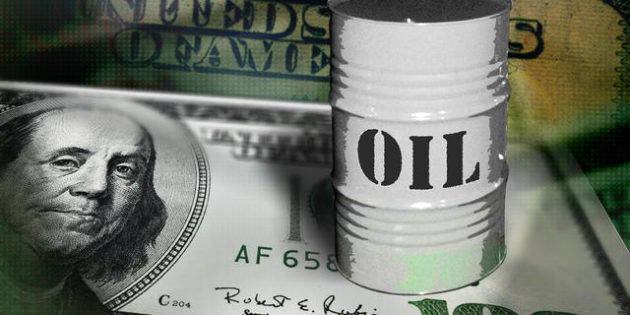EQUITIES
Shares in Asia-Pacific declined in Tuesday trade, as the Russia-Ukraine war continues to keep investors on edge.
The mainland Chinese markets leading losses regionally, with the China’s Shanghai composite declined 2%. The Hang Seng index in Hong Kong shed earlier gains and fell into negative territory as it slipped 0.45%.
In Japan, the Nikkei 225 slipped 1.27% while the South Korea’s KOSPI dipped 0.77%. Over in Australia, the S&P/ASX 200 declined 0.75%.
The risk-off appetite battered markets across the Asian region also suggesting more pain for European and U.S. markets when they open later in the day.
OIL
Oil prices gyrated on Tuesday as the U.S. considered acting alone to ban Russian oil imports rather than teaming up with allies in Europe. Germany, the biggest buyer of Russian crude, rejected plans for an energy embargo, bolstering the volatility in the market.
Brent crude futures were up 0.94%, at $125.54 a barrel, paring gains after trading as high as $127.16 earlier today. The benchmark on Monday briefly hit more than $139 a barrel, its highest level since 2008.
U.S. WTI crude futures were up 0.60%, at $121.13 a barrel, paring gains after hitting $130 mark overnight.
CURRENCIES
The U.S. dollar was firm near a multi-month peak amid nerves the war and its economic consequences could spread. The dollar index, which tracks the greenback against a basket of its peers, was at 99.231 following recent turbulence that saw it trading between 99.4 and 98.7.
The yield on benchmark 10-year Treasury notes rose to 1.804% compared with its U.S. close of 1.749% on Monday. The two-year yield, which rises with traders' expectations of higher Fed fund rates, touched 1.5563% compared with a U.S. close of 1.548%.
Commodity currencies took a breather in their weeks-long rally. The rouble sliding to a record low of 160 to the dollar in erratic offshore trade on Monday and remains weighed on Tuesday.
GOLD
Gold prices slid from the key $2,000 on Tuesday as the U.S. dollar held firm.
Spot gold was down 0.3% at $1,992.80 per ounce, after scaling a one-and-a-half-year peak of $2,002.40 on Monday. U.S. gold futures were down 0.2% at $1,992.90.
Palladium was up 0.3% at $3,005.63 per ounce but eased from an all-time high of $3,440.76 scaled on Monday. Among other metals, spot silver fell 0.7% to $25.47 per ounce, while platinum fell 0.2% to $1,120.88.
ECONOMIC OUTLOOK
Asian shares fell on Tuesday as the third Russia-Ukraine peace talks made little headway and the prospect of a ban on oil imports from Russia triggered investor fears over inflation and slowing economic growth.
Investors continue to monitor the potential economic hit and pressure on consumer spending as the price of oil soars following Russia's invasion of Ukraine.
As Russia's invasion of Ukraine heads towards the two-week mark, the stakes for both sides in the ground war look set to rise. President Vladimir Putin said again on Sunday the war would continue until Ukraine accepted his demands and halted resistance, dimming hopes for a negotiated settlement. Putin said Ukraine must "demilitarise" and he made clear his goal was to remove the current government.
Regional airline stocks, which are sensitive to oil prices, continued to decline in Tuesday trade. Shares of Japan Airlines slipped 2.98% in Tuesday trade while Korean Air Lines in South Korea fell 1.81%. Over in Southeast Asia, shares of Singapore Airlines slipped 0.8%. Hong Kong-listed shares of China Eastern Airlines also shed 2.81% and Cathay Pacific dropped 2.3%.
Technology-linked stocks also slumped, tracking overnight losses on Wall Street after Nasdaq Composite index on Monday closed down more than 20% from its Nov 19 record closing high, confirming that the index is in a bear market. This marks the Nasdaq's first bear market since 2020, when the coronavirus outbreak crushed global financial markets.
Wheat jumped to a 14-year high, as industrial buyers and traders scrambled to source raw materials hit by supply disruptions.
In the U.S., investors are closely watching the consumer prices report due out on Thursday. The data is expected to show core U.S. CPI for February rose 6.4% year-on-year, up from 6% in January. A hotter reading will likely seal a Fed rate hike later this month.
The European Central Bank also meets on Thursday with the spectre of stagflation prompting economists to figure that policymaker might delay rate hikes until late in the year.














